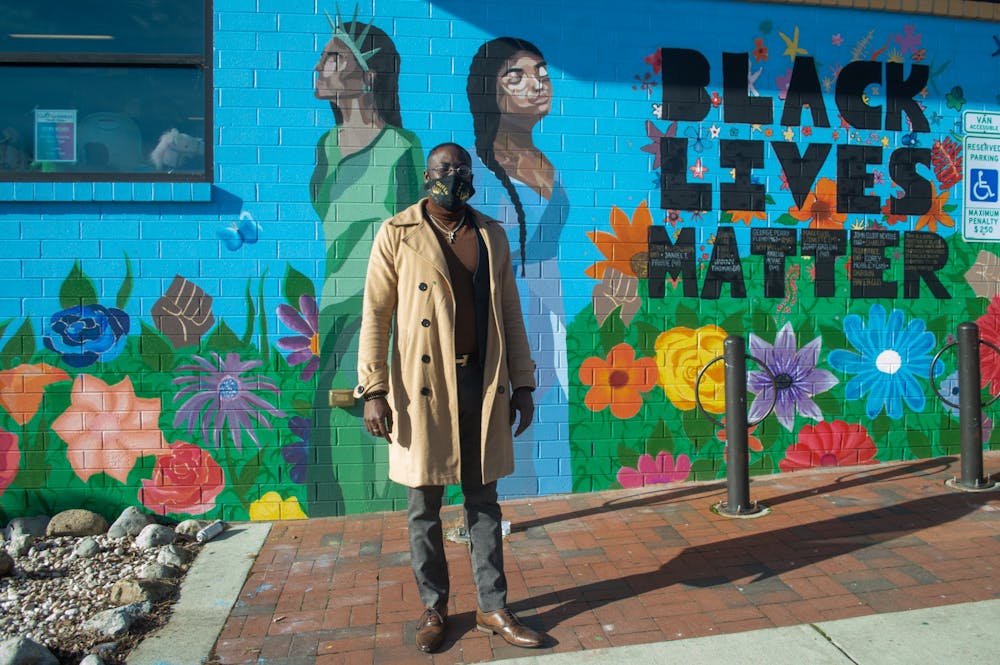On June 23, local filmmaker and photographer Sekou Keita proposed a Black Lives Matter mural at a Carrboro Town Council meeting. Seven months later, Carrboro has two murals supporting the Black Lives Matter movement.
After months of Black Lives Matter protests, residents and Town Council members hope the mural will keep the momentum of the movement going and bring the community together. Keita said at the June 23 meeting that he saw art bringing communities together in Greensboro and other cities in North Carolina, and wanted to unify the Town by creating a mural that would speak for all residents.
Besides the ongoing pandemic, the mural creation process overcame logistical challenges such as determining location, position and design. Town Council member Barbara Foushee said the amount of respect and reverence the murals would receive depended on the presentation of the Black Lives Matter message.
She said she approves of the newly-installed murals on the side of the Carrboro Century Center and the CommunityWorx Thrift Shop, both prominent locations, after voting against the originally proposed mural placement in an Oct. 6 Town Council meeting.
“Up high on the Century Center? That's a place of reverence and respect, you know?" Foushee said. "Reverence and respect to the message behind the mural, which is supporting the Black lives within the community and across the nation."
Both murals were painted by Black artists. Erbriyon Barrett, an Atlanta-based muralist, painted the “Black Lives Matter” mural on the Carrboro Century Center, home to the Carrboro Police Department. Barrett said painting the Black Lives Matter message on that building in particular made him realize how serious the Carrboro Town Council was about bringing representation to the community.
"That was very interesting to me in a good way, not a bad way," he said. "It was just like, 'Oh wow. They're really serious about this.' So I really appreciate that.”
He said he appreciated the dedication the Council showed toward the mural creation process and how the community welcomed him with open arms.
“It's important because I know we couldn't do this 40, 50 years ago out of fear, out of not knowing what's gonna happen next," Barrett said. "We have a bigger voice than we had back then.”




